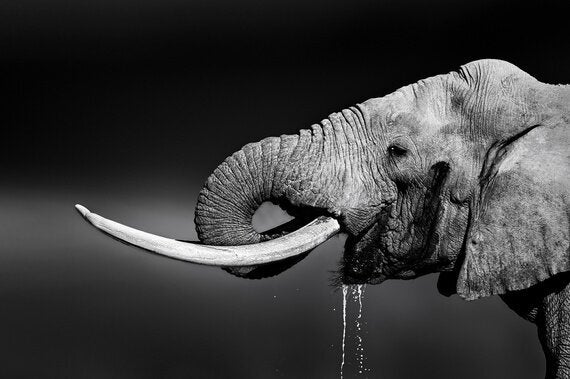Poaching is the illegal killing or capturing of animals, and has been around for as long as the first man decided that any animals found on his land could be killed only by him and his men. The offence back then, in the Middle Ages, was normally committed by poor peasants who needed food and nutrition. With the rise of feudalism in Europe, the number of private landowners blossomed and poaching became more difficult, demanding a more organised and vicious approach. Gamekeepers were hired to protect the landowner's assets from poachers - but not from hunters.
Hunting is the legal form of killing or capturing wild animals and, up until fairly recently, was encouraged, even celebrated, as a form of masculinity and power. The early 1900s saw the first law of its kind to recognise and protect an animal from hunting: the Migratory Bird Treaty Act, but it wasn't until 1973 that the Endangered Species Act enforced the conservation of any animal classed as endangered or threatened. The global ivory ban soon followed in 1989. Hunting is now stringently regulated according to the species' population, with rigorous defence systems in place that try and match the highly organised crime of poaching.
The problem
Poaching is no longer a crime against the nobility but it is a crime against wildlife. Animals are poached for their hide, fur, scales, horns, teeth, blood, bones and flesh, normally to be sold to clients for reasons ranging from medicinal to culinary. The illegal wildlife and plant trade is estimated to be worth a total of $70-213 billion a year, with elephant ivory valued at $2,142 per kg, and rhino horn over $60,000. As such, rhino poaching has increased 8,900% from 2007-2015, from 13 to 1,175, causing the Western Black Rhino to be declared extinct in 2011. Powdered rhino horn is used extensively in traditional Asian medicine, supposedly to cure a variety of illnesses from fevers and headaches to cancer. Their blood, urine and skin is also used in some folk medicines. There is no scientific evidence to support any of this.

Elephants are hit for a number of reasons. In China, there is a massive market for ivory, which they use for jewellery, ornaments and furniture, but there is also high demand for their skin and meat. 30,000 African elephants were estimated to be killed for their ivory in 2012. The year before, around one in twelve African elephants were killed by poachers. Paul Allen's Great Elephant Census found that approximately 100,000 elephants have been killed in the past four years alone, which is incredibly sad.
A ridiculous fact is that the poaching of tigers for captivity and their skins has led there to be more tigers in American backyards than in the wild. No matter how they're phrased, the statistics all point to the demolition of the giants of our wilderness. The numbers for rhino poaching, in particular, are still increasing year-on-year. The figures can be seen here. Five of the remaining rhino species are on the IUCN's redlist, with three classified as 'critically endangered'.
What's being done
The main problem the war against poaching faces is that terrorist and militia groups depend upon the financial income of illegal environmental trade. Ivory provides funds to militia groups in the Democratic Republic of Congo and to gangs that operate in Sudan, Chad and Niger. These kind of groups control the areas using violence and force and prevention is difficult.
However, there are a multitude of wildlife conservation groups at work, and there is a massive amount of support amongst governing bodies in Africa. Organisations such as Save the Rhino and Save the Elephants operate on the front-lines as well as helping to publicise the threats to these animals. In April this year, Kenya's president burnt 105 tonnes of seized ivory, containing the tusks of 8000 elephants, to send out a message to poachers and traders. The horde was worth $105 million on the black market.
The advancement of science and technology is also helping the fight. Scientists have developed an idea to trace fingerprints on ivory that will be able to link certain people to the illegal trade, making it easier to track down and sentence culprits.
Sadly, however, the war is still waging strong. Park rangers are simply outgunned when faced with the criminal gangs that operate in the wilderness. More than 1,000 rangers have been killed in the past decade. And still poaching increases.
What can you do?
Firstly, be mindful of what you buy. Ivory is a banned material since 1989, so shun it on all levels. The demand for exotic leathers and furs, whilst interesting, encourages poaching and should also be avoided. Raising awareness can seem futile but it's so important that everybody knows what is happening to the wild animals of our planet. They are an essential part of our ecosystem. Elephants, for example, alter wild landscapes to create water channels and protect communities from wildfires. Whole ecosystems will be comprised at their demise.
You can donate to the cause through charities such as Save the Rhino and Save the Elephant, or you can directly get involved through volunteering at home or abroad.
The fight against poaching started as a means to protect the nobility's right to hunt, but it has now become a war, a war that fights the lure of profit and wealth in order to protect the earth's wildlife and prevent the extinction of entire species. It's a hard fight but one that must be fought globally.
